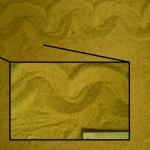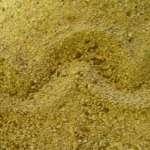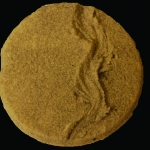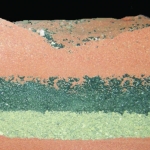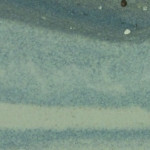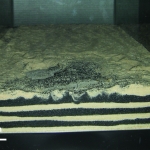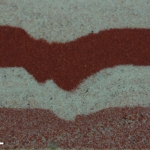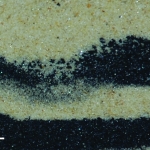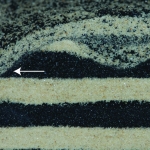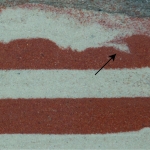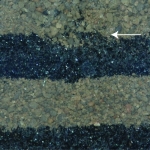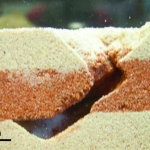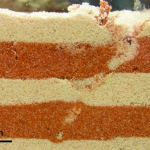Chalcides occelatus burrows in dry, unconsolidated sand. As a result open burrows are generally not produced. Instead the majority of the traces produced by C. occelatus are the result of disruption of primary sedimentary structures such a bedding.
Chalcides occelatus produces two types of surface structures, sinuous trails and sediment mounds. Sinuous trails are produced as the skink moves through the sand near the surface. Mounds are produced when the skink initially enters the sediment and pushes sand grains backward.
Chalcides occelatus produces three types of subsurface sediment disruption structures including U-shaped divots, layer truncation, and flame structures. These traces are produced as the skinks move along the surface of and through sand beds, transporting and mixing sand grains below the surface.
When the sand is moist, C. ocellatus is able to produce temporarily open burrows. Cohesion of the the sand grains leaves open burrows as the skink moves through the sediment. These open burrows are not occupied for long periods or maintained and collapse as the sand dries producing additional distinct sediment deformation structures.
